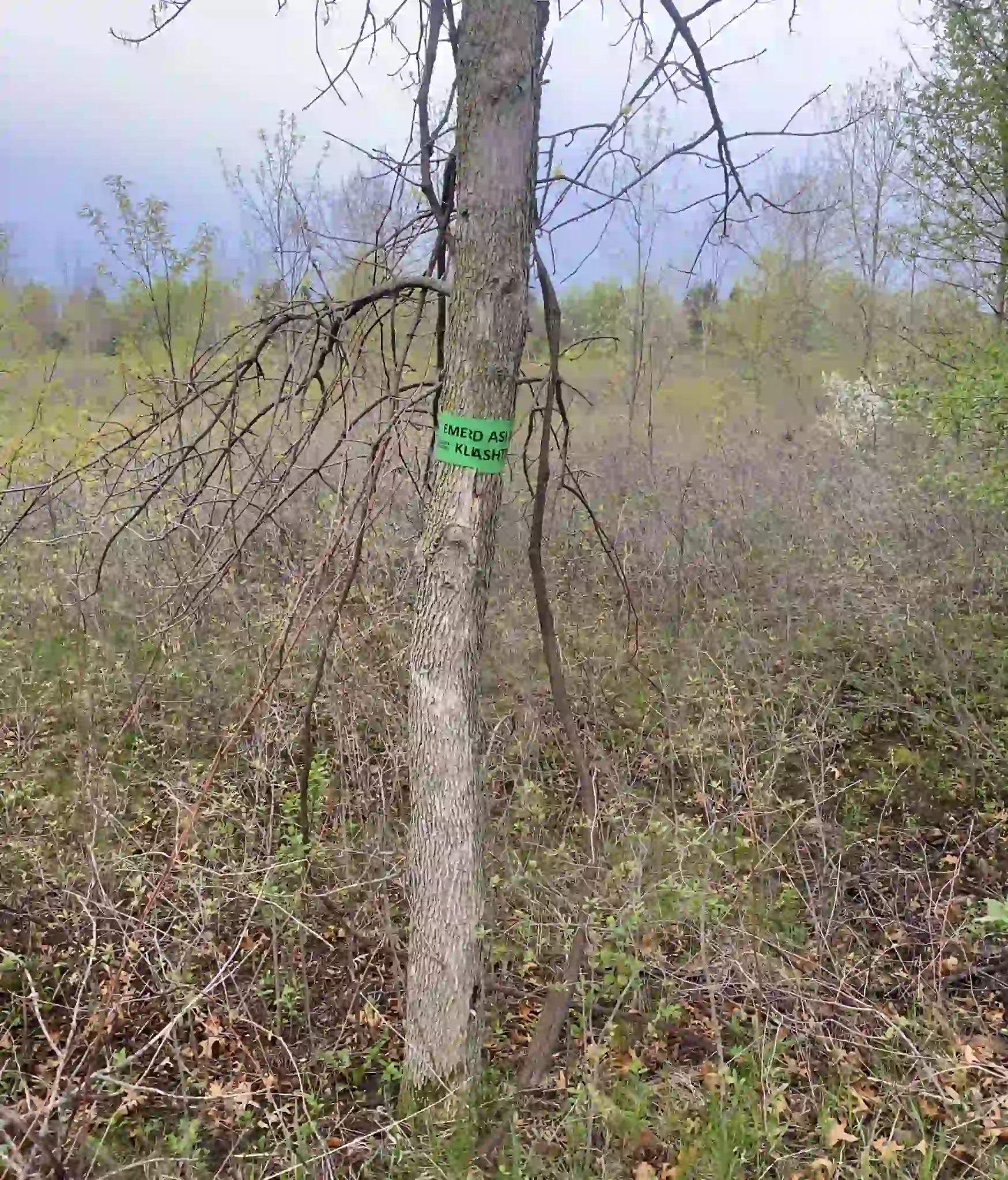Top 5 Things About Emerald Ash Borer
Emerald Ash Borer (EAB) has been lurking in the news background for the last several years. Now they are in your neck of the woods. Here are the top 5 things you need to know about EAB.

Who needs to know about emerald ash borer
EAB feed on the nutrient dense part of the tree right below the bark. This beetle is host specific and feeds on Ash Trees including:
- Black Ash (higher preference)
- Blue Ash
- Green Ash (higher preference)
- White Ash
While the adult Emerald Ash Borer prefers to lay eggs in open stand or stressed trees, they may lay them on any tree. More susceptible trees are located in an area with:
- compacted soil
- soil affected by road salts
- more heat pressure from lack of shade from other trees
- it may be more susceptible.

What kinds of damage do EAB’s do?
Emerald Ash borer feed beneath the bark on nutrient dense tree tissue. They leave S-shaped grooves underneath the bark. This feeding pattern blocks normal flow of food and water throughout the tree’s system.

Once EAB settle into an area, they can kill Ash trees within 10 years. With that short amount of time, putting control measures in place to protect the ash trees is vital.

How should you treat for Emerald Ash Borer
The first step in defense against EAB is keeping the Ash tree well groomed and healthy. Having a natural mix of vegetation and trees around Ash trees improve its overall health.
The second step is to monitor the trees. Quarantine and remove affected trees.
Most importantly, there are preventive measures available. Professional applicators can inject a systemic product into the tree to provide ongoing protection. Additionally, 3 species of parasitic, non-stinging wasps are great for combatting the invasive beetles:

Where are Emerald Ash Borer right now?
Early detection of EAB was in Michigan and the beetle has spread across Wisconsin, Minnesota, and many other states. Arborists, Departments of Agriculture, and many other agencies are joining together to get the word out and encourage a strong defense.

Why are EAB a spreading threat?
As an invasive species, the Emerald Ash Borer made its way to the US without its natural predators. Additionally, many local cultural practices left trees susceptible to infestation. These beetles spread quickly and work their tragic powers rapidly as well. The beetles are able to fly from tree host to tree host and affected firewood spreads the threat.
Protect your Ash Trees Today
Reach out to the Emerald Ash Borer team at Rove Pest Control to schedule your preventive treatment. Imagine how relieved you will feel knowing not only that your trees are protected, but that you have done your part to help the larger battle against the dreaded green beetle.
About Rob Greer: Pest Control Expert and Industry Leader
Rob Greer, co-founder of Rove Pest Control, has a deep connection with nature, developed during his upbringing in rural Idaho where he raised horses and cattle. He began his career in pest control in 2001 to support his university studies. After earning a BS in Business Management, Rob, along with Lenny Gray and McKay Bodily, founded Rove Pest Control.
Rob has played a pivotal role in shaping the operational framework of Rove Pest Control, with a focus on personal development for team members, public health awareness, and tailoring services to meet the needs of individuals and communities.
As an Associate Certified Entomologist (ACE) and Subject Matter Expert (SME), Rob has made significant contributions to the pest control industry. He has collaborated on the Minnesota Department of Agriculture’s UMN Extension certification manual and exam development, the National Pesticide Applicator Certification Core Manual for the EPA, and the Quality Pro Customer Service Credential Task Force. His expertise has also been recognized in his testimony for the pest control industry before the Minnesota state legislature as a State Policy Affairs Representative. Currently, Rob serves as the President of the Minnesota Pest Management Association Board. Learn more about Rob Greer.
